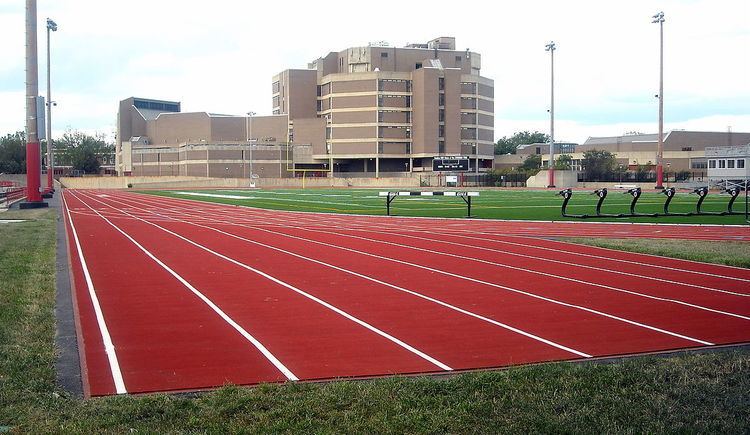School type Public high school Principal Stephen Jackson Grades 9 to 12 Mascot Crimson Tide | Established 1870 Faculty 66.0 (on FTE basis) Phone +1 202-698-3762 Colors Black, Red | |
 | ||
School district District of Columbia Public Schools Ward 5 Address 101 N St NW, Washington, DC 20001, USA District District of Columbia Public Schools Similar McKinley Technolo High Sch, Eastern Senior High Sch, Gonzaga College High Sch, Benjamin Banneker High Sch, Coolidge High School | ||
Paul Laurence Dunbar High School is a public secondary school located in Washington, D.C., United States. The school is located in the Truxton Circle neighborhood of Northwest Washington, two blocks from the intersection of New Jersey and New York Avenues. Dunbar, which serves grades 9 through 12, is a part of the District of Columbia Public Schools.
Contents
History
Originally named the Preparatory High School for Colored Youth and from 1891 to 1916 as M Street High School, the school was founded as an educational mission at the Fifteenth Street Presbyterian Church. The school was America's first public high school for black students. The school was renamed in 1916, when its location was changed from M Street, after the famous African-American poet, Paul Laurence Dunbar, who died in 1906.
It later was designated as the city's academic high school, with other schools providing more vocational or technical training goals. Dunbar was known for its excellent academics, enough so that some black parents moved to Washington specifically so their children could attend it. Its faculty was paid well by the standards of the time, earning parity pay with Washington's white school teachers because they were all federal employees. It also boasted a remarkably high number of graduates who went on to higher education, and a generally successful student body.
Dunbar is similar to Paul Laurence Dunbar High School in Baltimore, Maryland and Fort Worth, Texas, as all three schools have a majority African American student body and are of a major importance to the local African American community. All three schools are also highly regarded for their athletic programs within their respective school district in the sports of football, basketball and track. There is also a Paul Laurence Dunbar High School in Lexington, Kentucky.
One of Dunbar's first principals was the first black graduate of Harvard College. Almost all the teachers had graduate degrees, and several earned PhDs. By the 1950s, Dunbar High School was sending 80 percent of its students to college. According to Thomas Sowell, this all changed after the landmark United States Supreme Court Case Brown v. Board of Education : "For Washington, the end of racial segregation led to a political compromise, in which all schools became neighborhood schools. Dunbar, which had been accepting outstanding black students from anywhere in the city, could now accept only students from the rough ghetto neighborhood in which it was located. Virtually overnight, Dunbar became a typical ghetto school. As unmotivated, unruly and disruptive students flooded in, Dunbar teachers began moving out and many retired. More than 80 years of academic excellence simply vanished into thin air."
Since its inception, the school has graduated many well-known figures of the 20th century, including Sterling Brown, H. Naylor Fitzhugh, Nannie Helen Burroughs, Charles R. Drew, William H. Hastie, Charles Hamilton Houston, Robert Heberton Terrell, Benjamin O. Davis, Benjamin O. Davis JR., Paul Capel, III, Robert C. Weaver, and James E. Bowman. Its illustrious faculty included Anna Julia Cooper, Kelly Miller, Mary Church Terrell, A.A. Birch Jr., Carter G. Woodson and Julia Evangeline Brooks who was also a graduate of the school. Among its principals were Anna J. Cooper, Richard Greener, Mary Jane Patterson, and Robert Heberton Terrell. An unusual number of teachers and principals held Ph.D. degrees, including Carter G. Woodson, father of Black history Month and the second African American to earn a Phd. from Harvard (after W. E. B. Du Bois).
This was the result of the entrenched white supremacy that pervaded the nation's professions and served to exclude the majority of African-American women and men from faculty positions at predominantly white institutions of higher learning. As a consequence, however, Dunbar High School was considered the nation's best high school for African Americans during the first half of the 20th century. It helped make Washington an educational and cultural capital.
Until the 1954 opening of the all-black Luther Jackson High School in Fairfax County, Virginia, Dunbar and several other DCPS schools, along with a school in Manassas, Virginia, enrolled black secondary school students from the Fairfax County Public Schools as that district did not yet operate secondary schools for blacks.
Athletics
Dunbar competes in the D.C. Interscholastic Athletic Association.
Student body
Dunbar has about 1500 students.
Approximately 46% of students qualified for free or reduced lunch.
Feeder patterns
Feeder elementary schools include:
Feeder middle schools include:
Feeder K-8 schools include:
Notable alumni
Notable graduates include:
